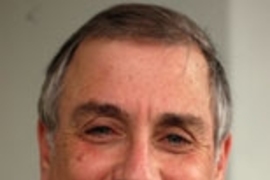In an effort to assess health-care organizations' cost-cutting techniques, Department of Urban Studies and Planning (DUSP) Professor Frank Levy will study the effects of different initiatives to restrict non-necessary medical-imaging procedures on the costs and quality of care.
Levy, the Rose Professor of Urban Economics, will examine evidence suggesting that a significant fraction of imaging (MRIs, PET scans, etc.) is done for non-medical reasons--to satisfy demanding patients, to protect against malpractice or sometimes to generate income. Medical imaging currently accounts for about one-sixth of Medicare fee-for-service payments for physician services.
The upcoming research will be funded by a $335,000 Investigator Award in Health Policy Research that Levy recently received from the Robert Wood Johnson Foundation.
Currently, health care organizations are trying to define and restrict unnecessary imaging through such policy stipulations as prior authorizations, decision support systems, physician profiling and reduced reimbursement. So far, however, little is known about the relative performance of these different initiatives.
Levy's project will approach the issue from two perspectives--a "top-down" analysis of the growth of imaging expenditures in the United States; and six "bottom-up" case studies of the origins, implementation and effects of different image-reduction initiatives undertaken by hospitals and insurers.
The research, expected to take two years, aims to increase understanding of our ability to slow the growth of imaging expenditures and health care costs overall by rationing unnecessary procedures.
Levy and co-author Richard Murnane of the Harvard School of Education followed a similar process in two previous projects--one exploring the disconnect between public schools and the labor market, and a more recent project describing the impact of computerized work and offshoring on the U.S. occupational structure and skills demands.
The Robert Wood Johnson Foundation created the Investigator Awards in Health Policy Research in 1992 to enhance society's understanding of significant problems and policy issues related to the health and health care of Americans, and to provide information that can help improve the formulation of sound policies.
The program works by providing grants of up to $335,000 to develop, interpret or advance ideas or knowledge that can improve health policy in the United States. Since 1992, the Foundation has funded 124 projects involving 156 investigators from the nation's leading private and state universities, and other nonprofit organizations.







